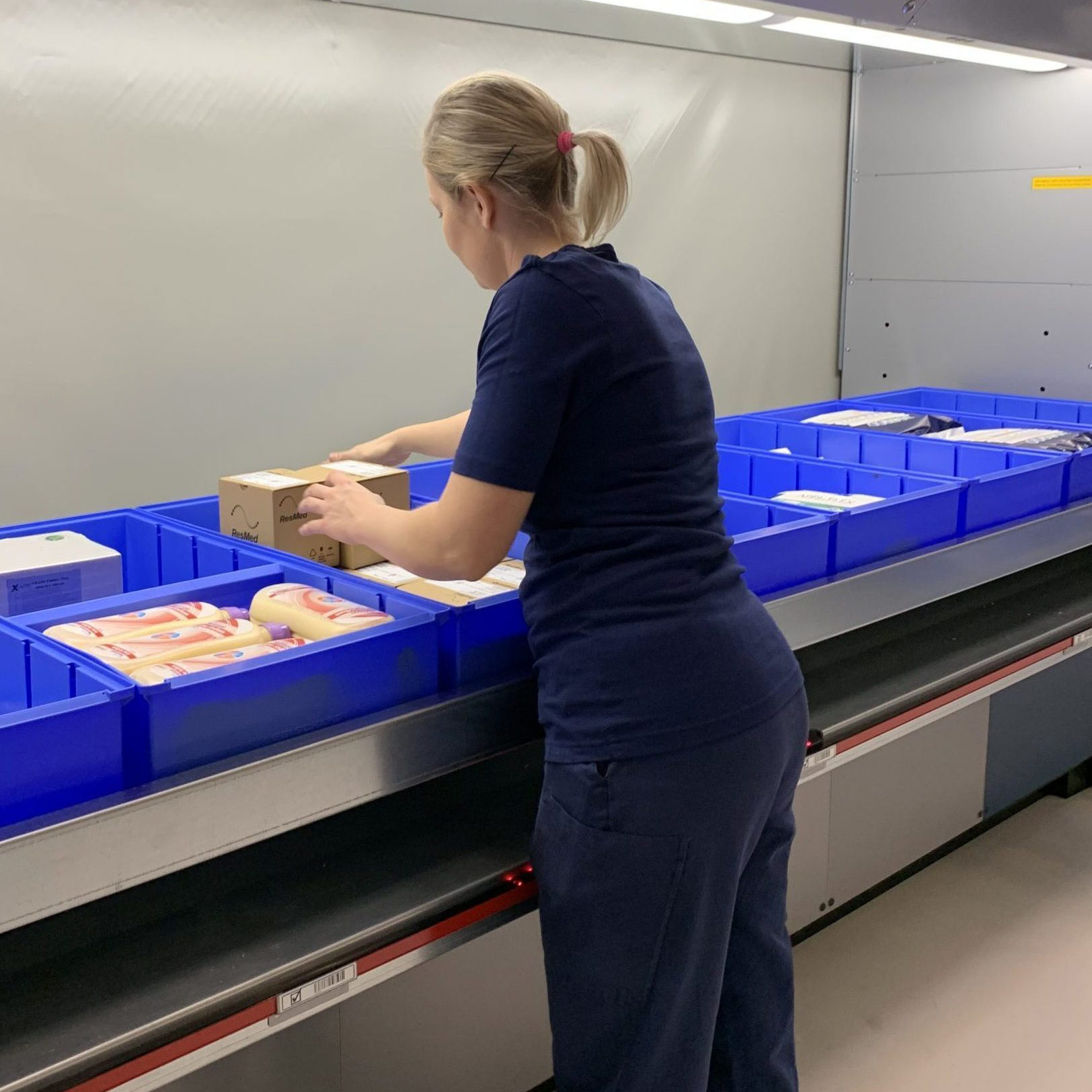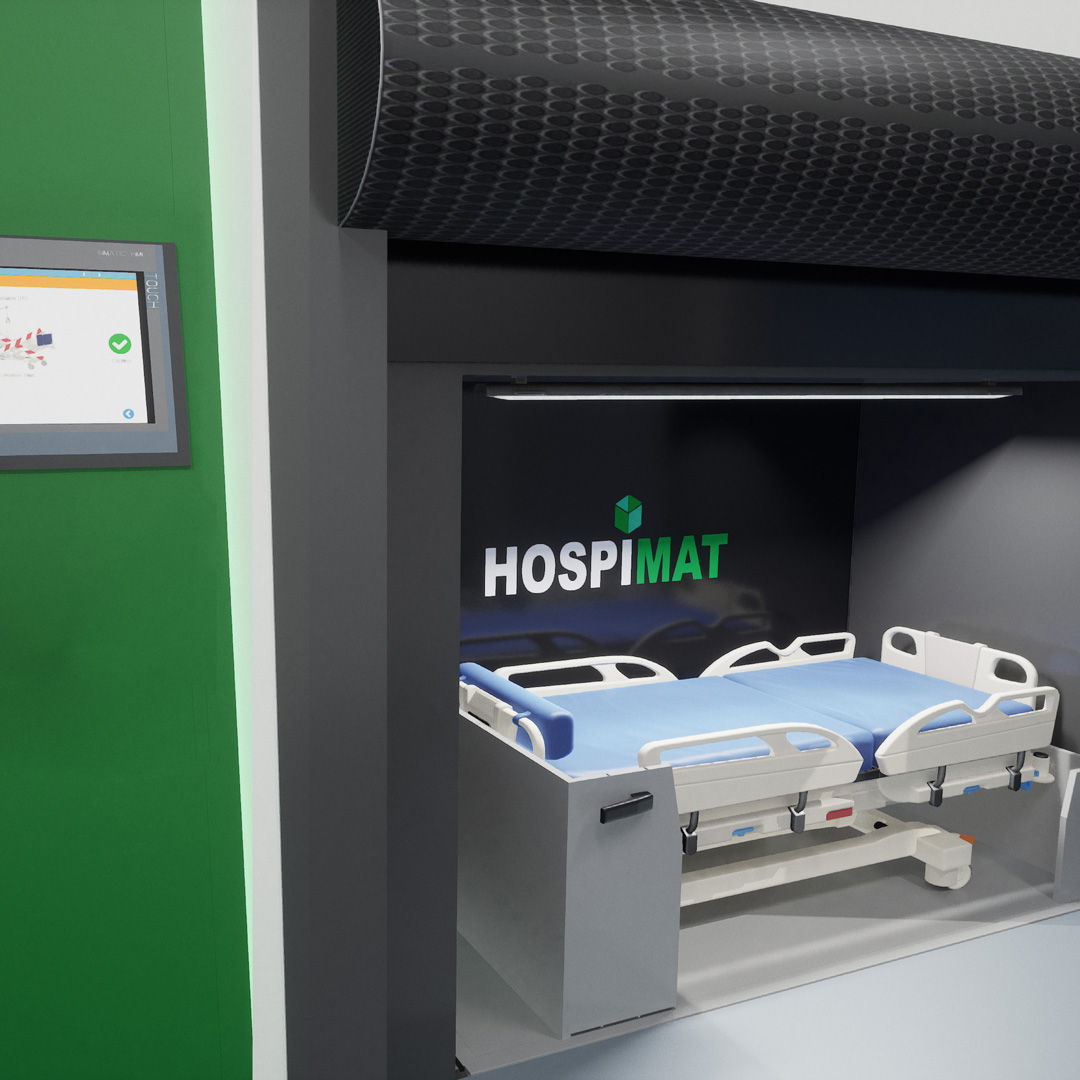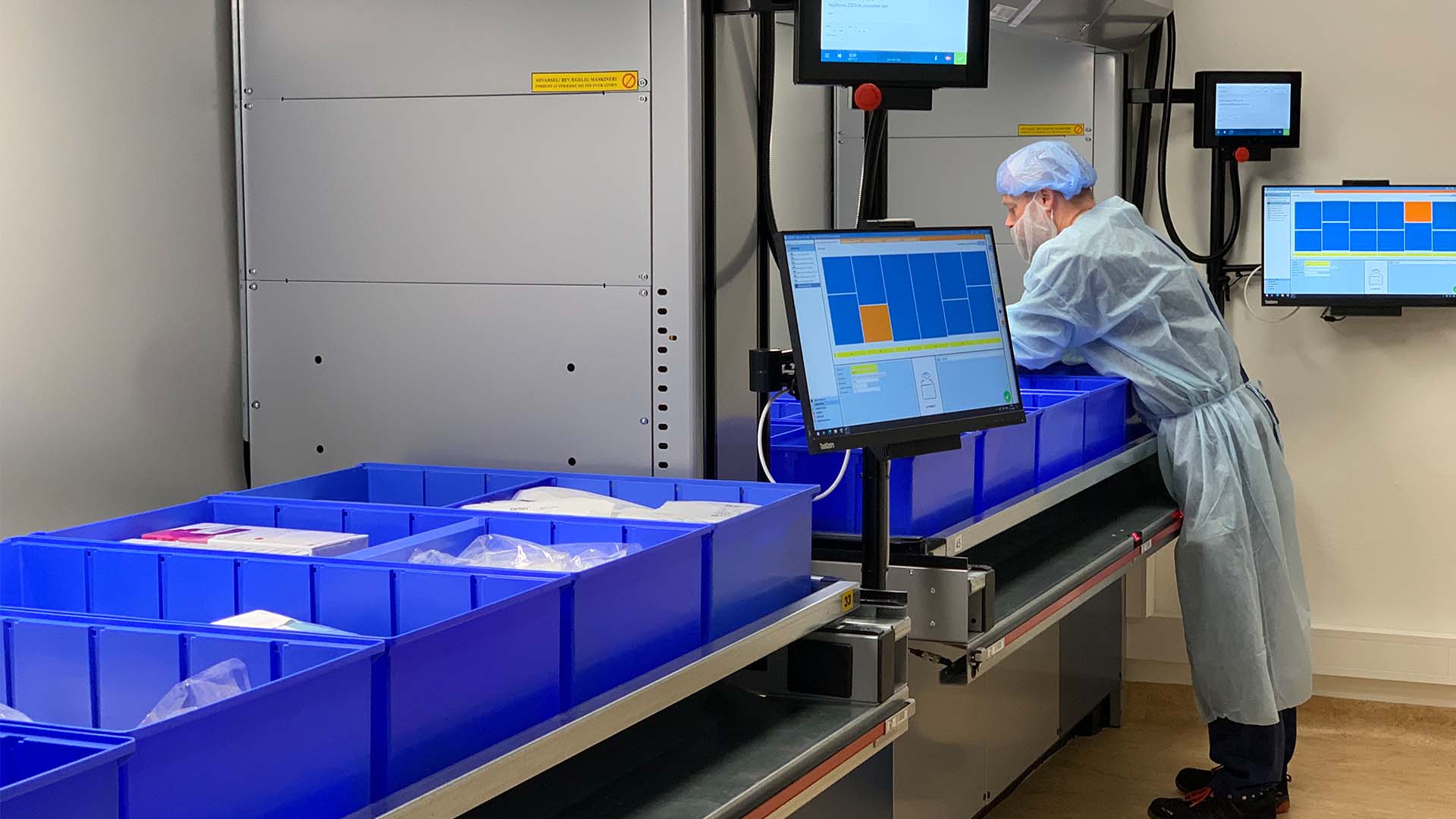Optimal hospital logistics
LOGIA WMS expert advice
Surveys have confirmed that more than 30% of the costs in a hospital relate to hospital logistics. Therefore, several hospitals have implemented the warehouse management system LOGIA. This resulted in less waste, increased efficiency, and more time for patient care.
Optimal operations in the central warehouse
LOGIA WMS controls everything in the warehouse from layout, locations, and inventory to an efficient handling of incoming and outgoing orders. The inventory is accurate, and all goods are handled correctly, whether sterile or clean. Orders are automatically prioritized and assigned to operators with proper competencies, who will be guided through ideal routes of LOGIA’s visual interface.
Special order goods, which are not included in the normal assortment, are registered in LOGIA WMS, and given a temporary location, after which they are picked in context with the flow of standard goods.

Efficient distribution and repository service
LOGIA warehouse management system controls the delivery of goods to different departments in a hospital, medical practices, treatments in private homes and more. Defect goods can easily be withdrawn with full traceability.
LOGIA collects the orders for each department and enables these to be delivered collectively. Thus, a great deal of time is saved while also the amount of internal transportation will be reduced. Urgent orders are prioritized ahead of everything else and are sent as express delivery.
The WMS-platform can also manage the ordering and delivery of goods to repositories and medical pass-through cabinets within the operating rooms. This service enables both single-piece and opened orders, hence taking up less space in the departments and reducing waste as to the expiration date of the goods. The departments' orders are managed via the hospital’s ERP- or electronic tag system. Goods delivered directly to operations can be traced by the patient’s CPR number.
Read more about repository service at Hospital Sønderjylland
Automation optimizes hospital logistics
Hospitals can benefit from automatic warehouse equipment such as vertical storage lifts and self-driven AGVs and AMRs. The latter is used for internal transport in the warehouse and departments within the hospital, whereas vertical storage lifts are used for compact warehousing of small goods of regular, sterile, and clean character. LOGIA WMS is in full control of all automatic storage units and all goods within these.
Vertical storage lifts can be integrated into the hospital building with openings on different floors. As a result, goods and equipment are easily accessible to the different departments in the hospital and prevent taking up space in the departments.
See case: Efficient logistics in The New Stavanger University Hospital


Simple and timesaving hospital bed logistics
LOGIA is in control of the newest warehouse technology for the storage and transport of patient beds. Bed storage lifts are embedded in the floors of the hospital building with openings, from where the staff receives clean beds and hands over beds recently used for patients. This enables the hospital to quickly replace the beds between hospitalizations and avoid beds taking up space in the hallways.
The warehouse management system administers the beds and ensures that clean beds are always available while also the beds recently used for patients are automatically dispatched to the cleaning area.
Watch video: Hospital Sønderjylland
"The logistics in the hospital have experienced a massive improvement" - Hans Madsen, Warehouse Chief. LOGIA WMS controls the entire flow of goods in the central warehouse of Hospital Sønderjylland and ensures that the high demands for hygiene, quality and expiration date are met. (Danish video)

Sterile and clean supplies
Hospitals have both sterile and clean equipment, and this places specific demands on the handling of these and often requires several separate storage areas.
LOGIA WMS has the ability to control all storage areas in one solution, both manually and automatically. The platform ensures that goods are handled and stored correctly with respect to the necessary demands.
Sterile storage area and Case Carts
The warehouse management system ensures that the demands for hygiene, expiration date, and traceability are met. Supplies that are needed in the operating halls also referred to as ‘Case carts’ are packed within the sterile storage area. All goods are controlled via LOT numbers and for individual operations the goods can be tracked on the patient level.
Supply schedule
LOGIA has the functionality to support an efficient supply plan from the central warehouse to the different hospitals and departments. The supply service arranged with the different departments in the hospital can be organized into a route structure, from where each department functions as a pitstop on the route.
The order in which goods are picked in the warehouse is determined by the supply schedule, which specifies the departure times of the goods from the central warehouse. The goods that are scheduled to leave the warehouse first are picked first, and they are placed in the shipping ranks according to the order in which they will be loaded.
Internal transportation of utility carts
More and more hospitals have started implementing warehouse technology to support the internal transport of utility carts with linen, towels, cleaning supplies, and food. Using warehouse technology, in which a horizontal warehouse is implemented in the building, is an alternative to AGVs and will reduce the constant traffic inside the hospital halls.
The supplies in the horizontal warehouse are available when the departments need them. The solution reduces the need for storage space and refilling the warehouse will be less time-consuming.
Insights
Want to know more about LOGIA WMS?
Explore further by scheduling a demo through the form or by reaching out to one of our experts directly. We're here to assist you!

Contact Karsten Bangshaab

Contact Niels Have

Contact Jesper Højlund













